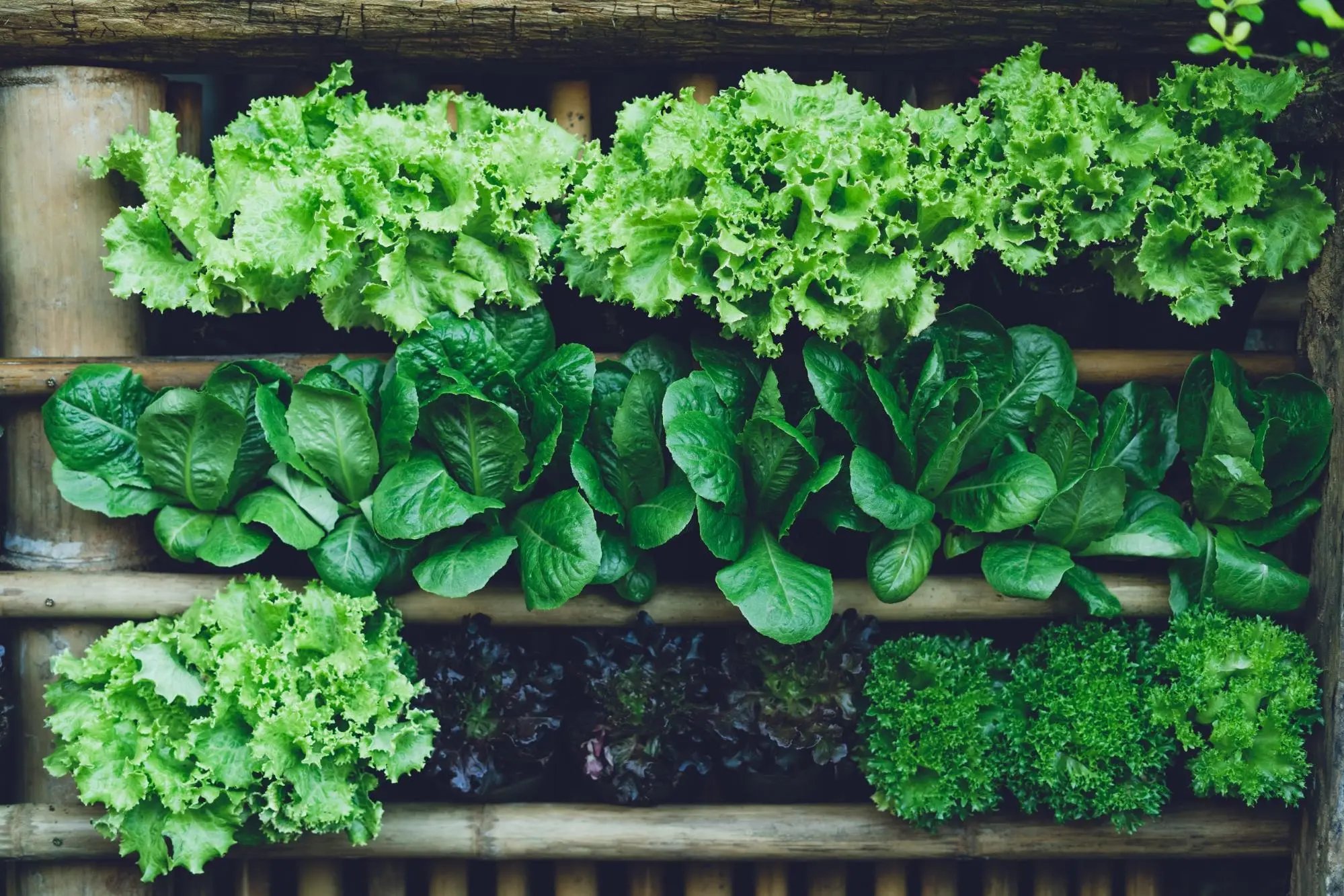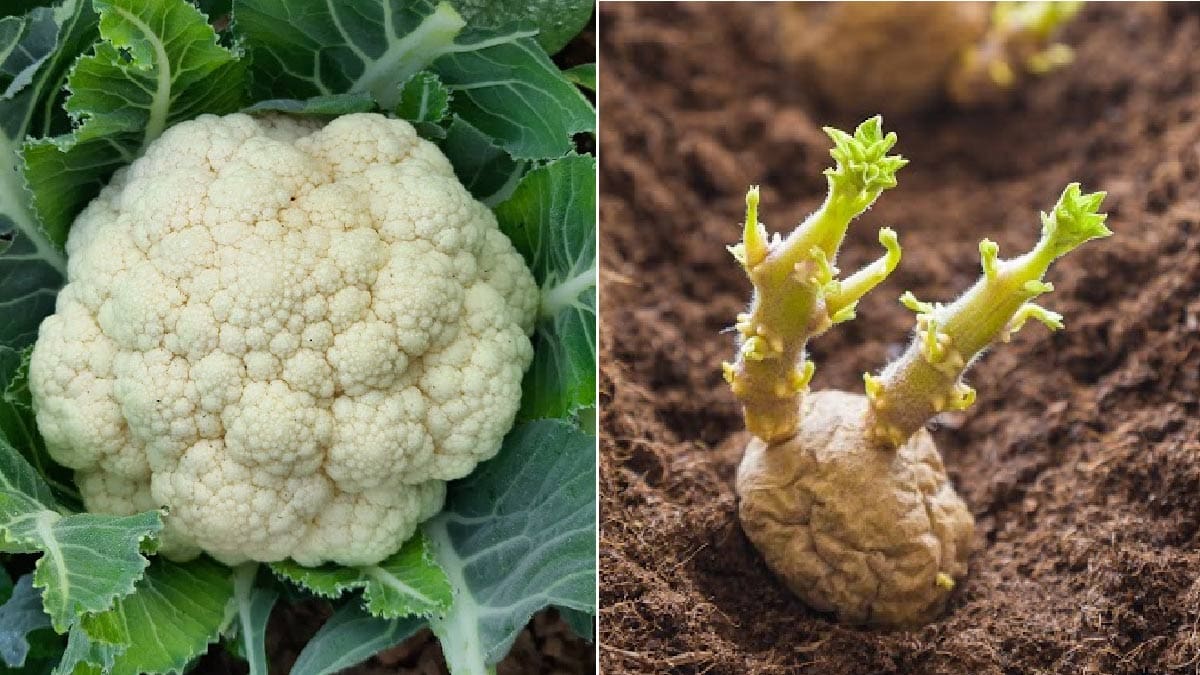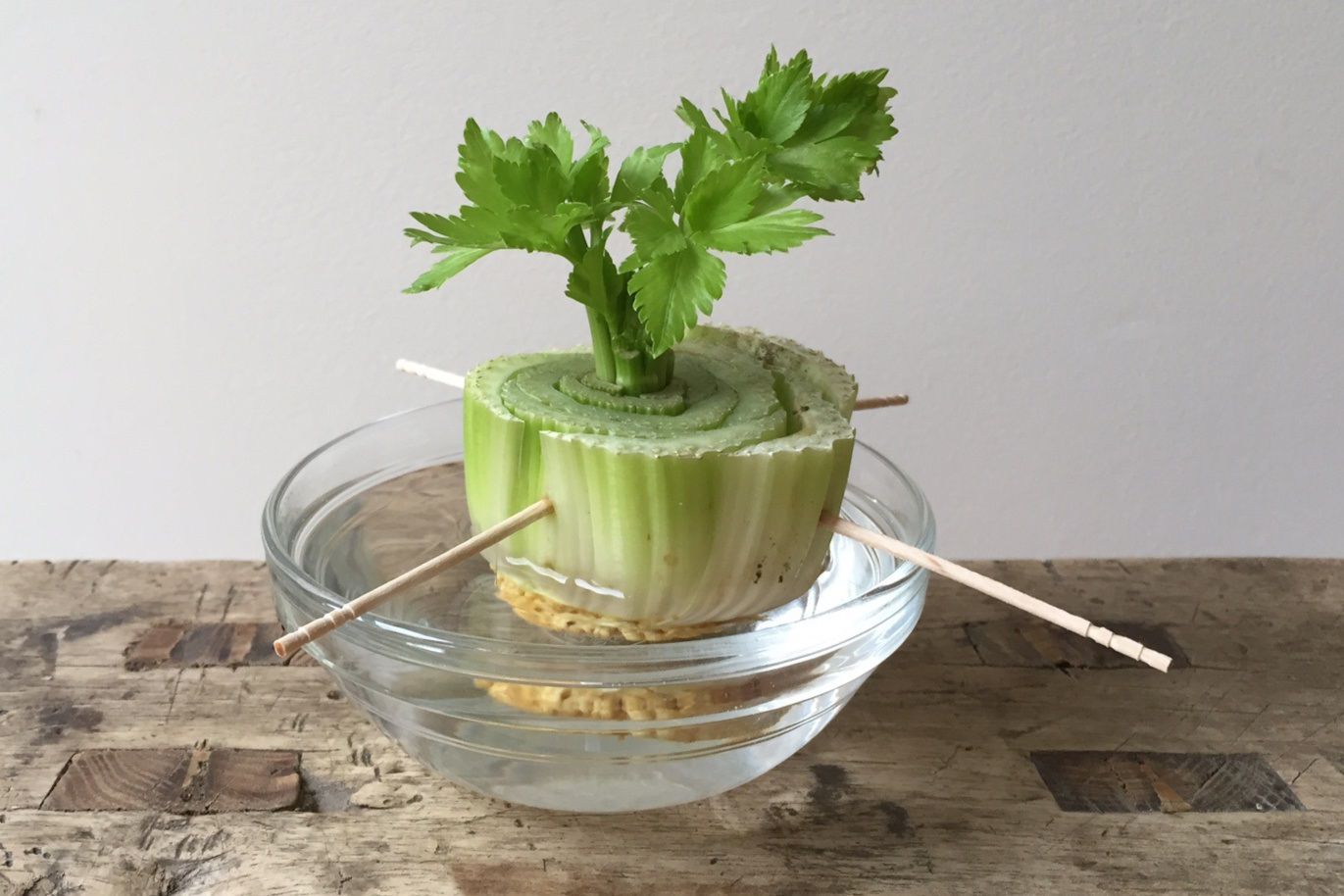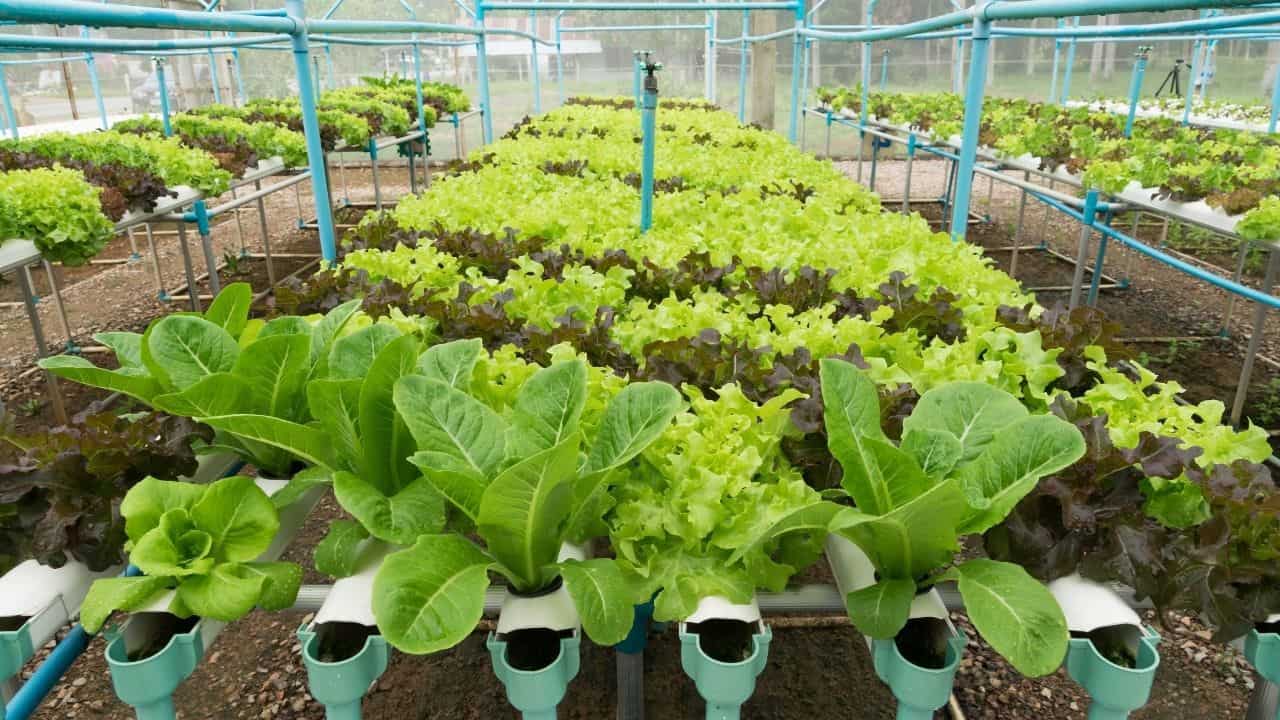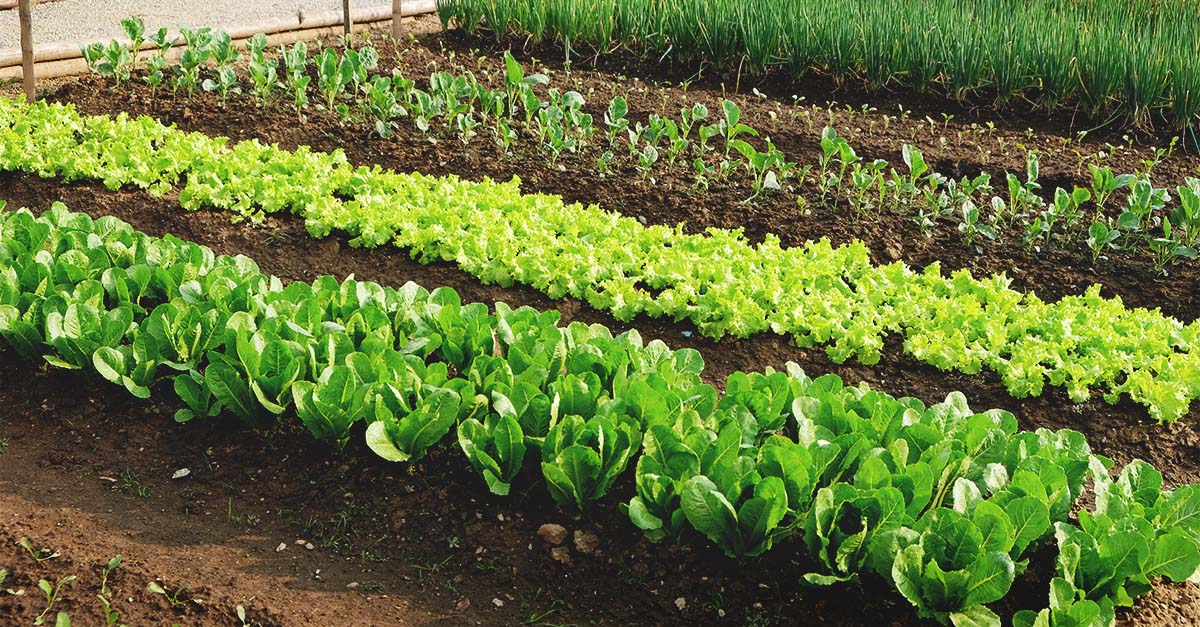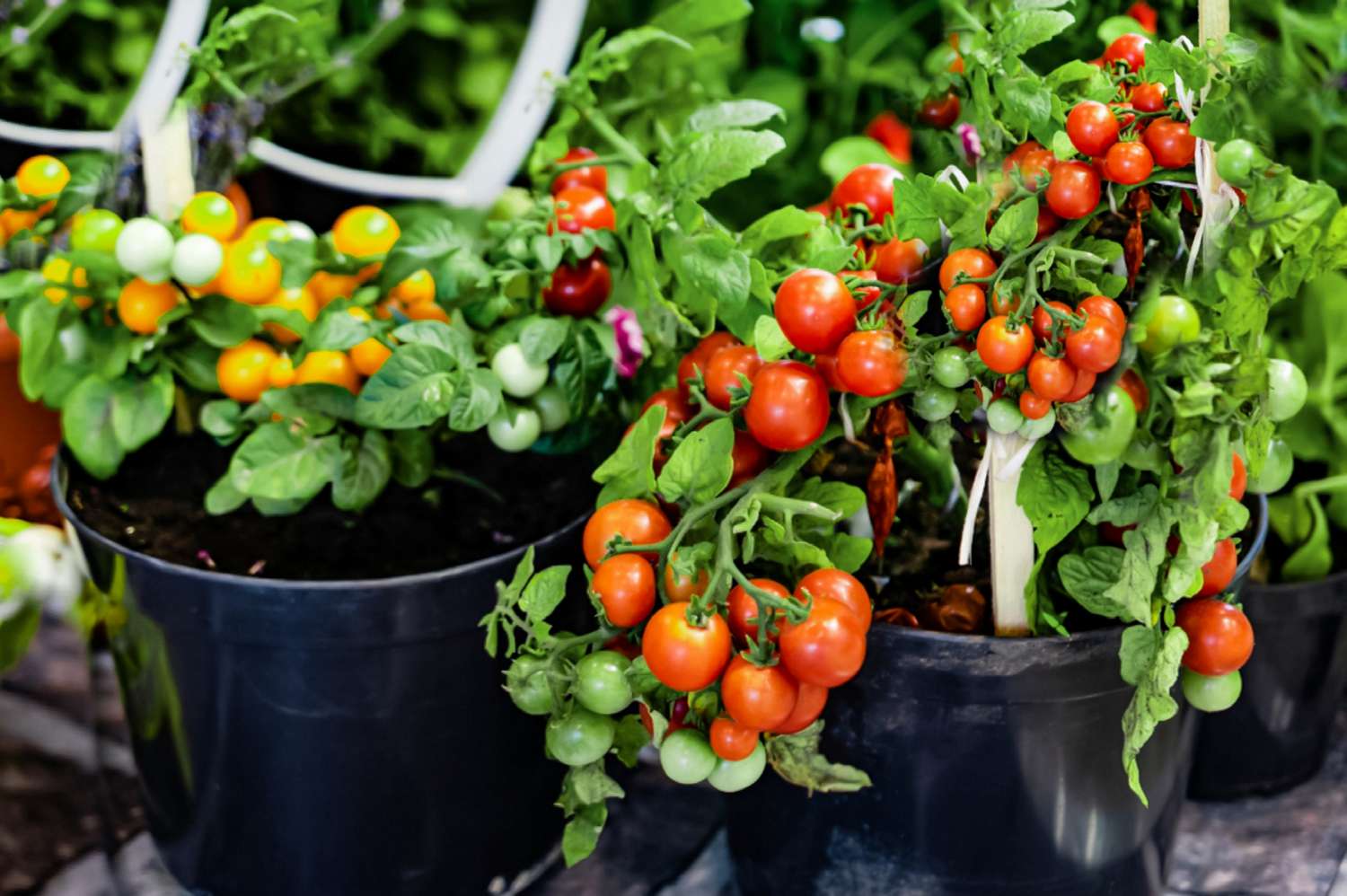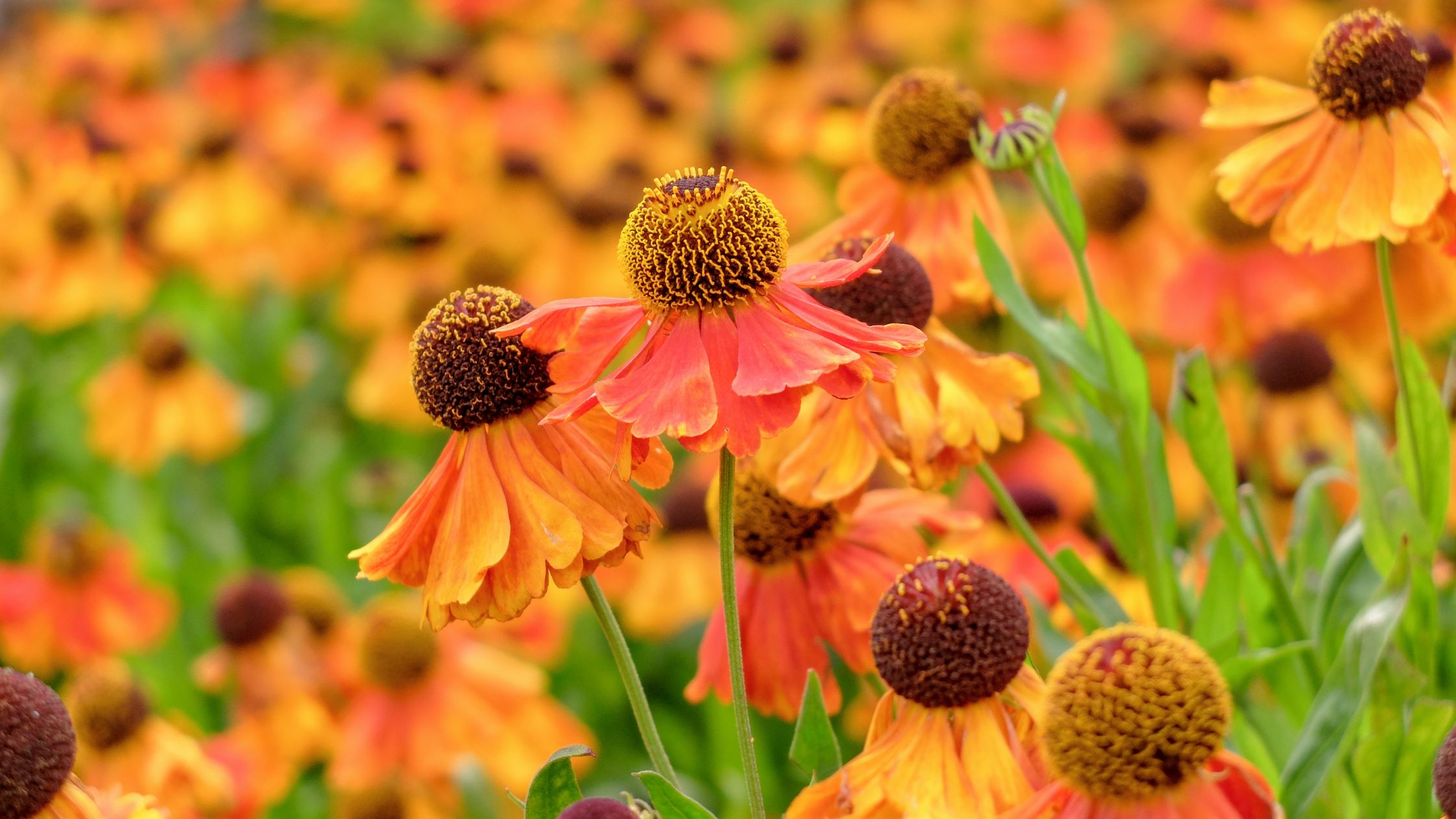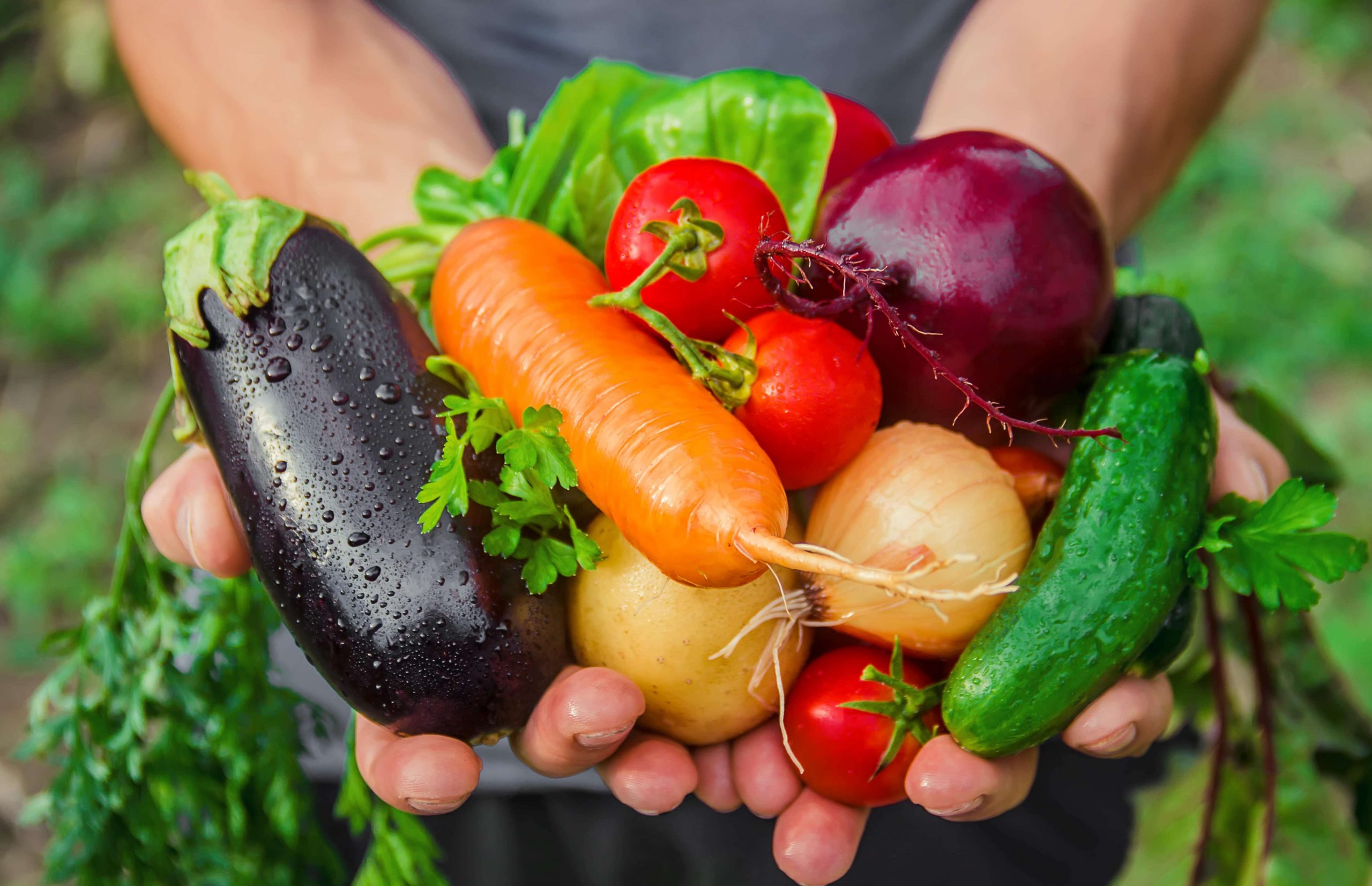Home>Types of Gardening>Edible Gardening>What Vegetables Grow Back Every Year
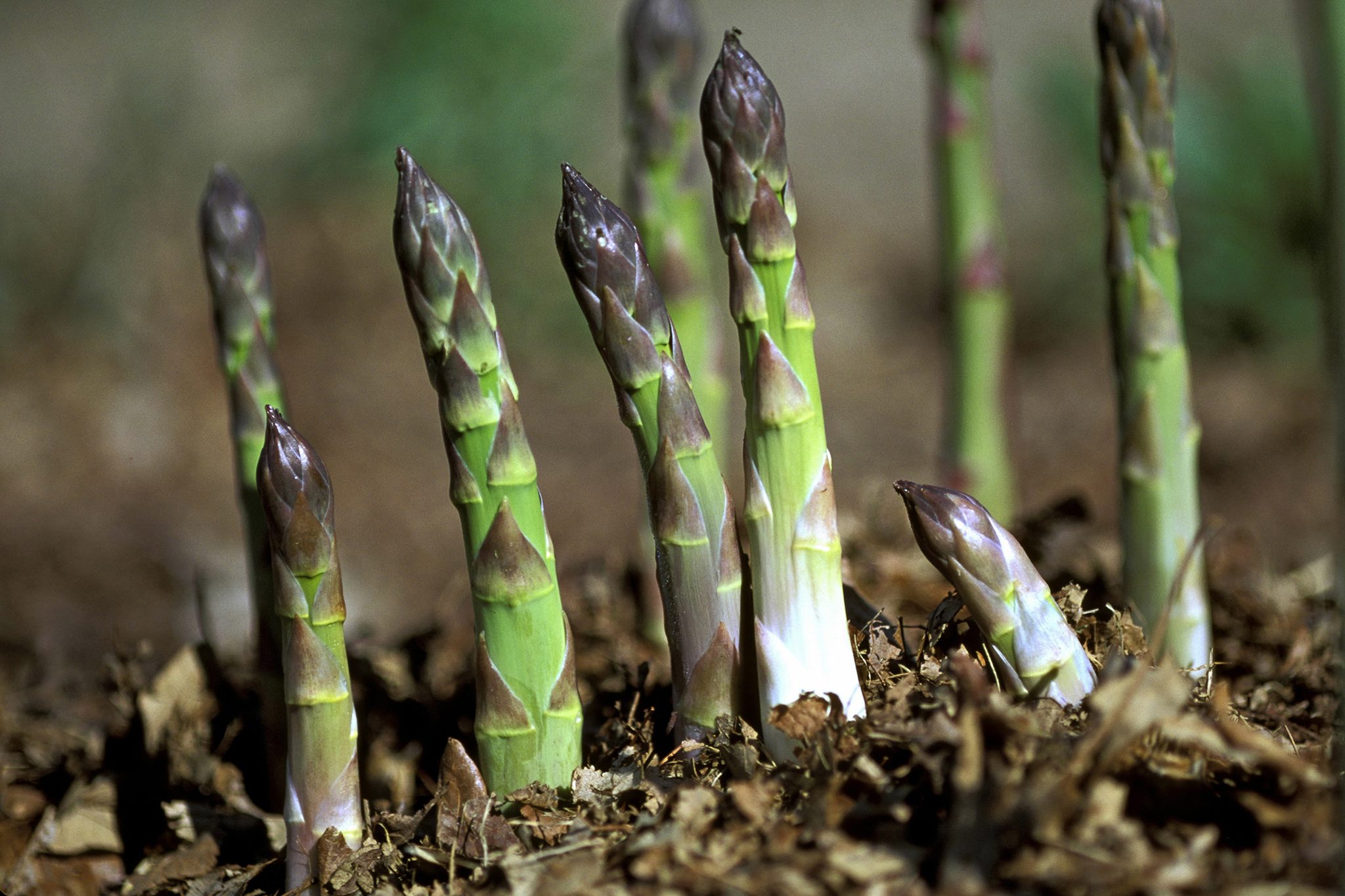

Edible Gardening
What Vegetables Grow Back Every Year
Published: October 14, 2023
Discover the joy of edible gardening with vegetables that grow back every year. Explore our guide for a low-maintenance and sustainable garden.
(Many of the links in this article redirect to a specific reviewed product. Your purchase of these products through affiliate links helps to generate commission for Chicagolandgardening.com, at no extra cost. Learn more)
Table of Contents
Introduction
Gardening is a rewarding hobby that allows you to cultivate and enjoy fresh produce right at your doorstep. While annual vegetables require planting each year, there is another category of vegetables known as perennial vegetables, which have the wonderful ability to grow back year after year.
Perennial vegetables are a great addition to any edible garden as they offer a range of benefits. Not only do they provide a continuous supply of nutritious food, but they also require less maintenance and can withstand various weather conditions. By incorporating perennial vegetables into your garden, you can create a sustainable and self-sufficient food source.
In this article, we will delve into the world of perennial vegetables, exploring their advantages, popular varieties, planting techniques, care tips, and harvesting methods. Whether you are a seasoned gardener or a beginner, this comprehensive guide will equip you with the knowledge and skills to successfully grow and enjoy the bounty of perennial vegetables.
So, if you’re ready to enhance your edible garden with a diverse range of vegetables that come back year after year, let’s delve into the wonderful world of perennial vegetables!
Understanding Perennial Vegetables
Perennial vegetables are a unique category of edible plants that have the ability to grow and produce food for multiple years without replanting. Unlike annual vegetables, which complete their life cycle within a single growing season, perennial vegetables have a longer lifespan, often lasting for several years or even decades.
One of the key characteristics of perennial vegetables is their ability to survive winter and regrow from the same plant, year after year. This resilience allows them to establish deep root systems, making them more resistant to drought and other adverse environmental conditions.
While many people are familiar with traditional annual vegetables like tomatoes and cucumbers, perennial vegetables offer a diverse range of flavors and textures to add variety to your garden and meals. Some common examples of perennial vegetables include asparagus, rhubarb, artichokes, and perennial herbs like thyme and sage.
It’s important to note that not all vegetables are perennial. The majority of commonly grown vegetables, such as lettuce, peppers, and tomatoes, are annuals. However, by incorporating a few perennial vegetables into your garden, you can enjoy a continuous harvest and reduce the need for replanting each year.
Perennial vegetables also have the advantage of being low-maintenance compared to their annual counterparts. Once established, they require less attention and care, providing a more sustainable and efficient way of gardening. Additionally, their extended lifespan reduces the need for frequent soil preparation and nutrient replenishment.
Now that we have a basic understanding of perennial vegetables, let’s explore the advantages they offer and why you might want to consider growing them in your own garden.
Advantages of Growing Perennial Vegetables
Growing perennial vegetables in your edible garden offers a multitude of advantages that can greatly enhance your gardening experience. Here are some key benefits worth considering:
1. Sustainable and Self-Sufficient: Perennial vegetables are a sustainable choice as they eliminate the need for annual replanting. Once established, they continue to produce food year after year, reducing the amount of work and resources required to maintain your garden. This self-sufficiency allows you to enjoy a continuous harvest without constant intervention.
2. Low Maintenance: Compared to annual vegetables, perennial vegetables generally require less maintenance. Once they are established, they have deep root systems that help them access water and nutrients from the soil, making them more resilient to drought and reducing the need for frequent watering. They also require minimal soil preparation and don’t need to be replanted each year, saving you time and effort.
3. Increased Resilience: Perennial vegetables are often more resilient to adverse weather conditions and pests. Their established root systems enable them to withstand harsh conditions and bounce back stronger after winter dormancy. This resilience reduces the risk of crop failure and increases your chances of a successful harvest.
4. Consistent Harvests: With perennial vegetables, you can enjoy a consistent supply of fresh and nutritious produce throughout the growing season. Unlike annuals that have a specific harvest time, most perennial vegetables have longer harvesting periods, allowing you to pick and enjoy the fruits of your labor over an extended period of time.
5. Biodiversity and Flavor: Perennial vegetables offer a wide range of flavors, colors, and textures that can add diversity to your meals. From the earthy taste of asparagus to the tanginess of perennial herbs, these unique flavors can elevate the culinary experience and encourage you to explore new recipes.
6. Environmental Benefits: Incorporating perennial vegetables into your garden can have environmental benefits. Their deep root systems help improve soil structure, prevent erosion, and enhance soil fertility by increasing organic matter. Additionally, their year-round growth can provide habitat and food sources for beneficial insects and wildlife, contributing to overall ecological balance.
By growing perennial vegetables, you can create a more sustainable, efficient, and resilient edible garden that offers a continuous supply of fresh and delicious produce. Now let’s discover some popular perennial vegetables that are worth including in your garden.
Popular Perennial Vegetables
When it comes to perennial vegetables, there is a wide variety of options to choose from, each with its own unique flavors and growing requirements. Here are some popular perennial vegetables that are worth considering for your garden:
1. Asparagus: Asparagus is a classic perennial vegetable known for its tender shoots and distinct flavor. It takes a few years to establish, but once it does, it can continue producing for up to two decades. Asparagus prefers well-drained soil and a sunny spot in the garden.
2. Rhubarb: Rhubarb is another perennial vegetable that thrives in cooler climates. It produces large, edible stalks that are often used in pies, jams, and other desserts. Rhubarb plants can be harvested for many years if given a spot with rich soil and regular watering.
3. Artichoke: Artichokes are not only delicious but also visually striking in the garden. These perennial vegetables produce beautiful flower buds that are harvested before they fully bloom. Artichokes thrive in sunny locations with fertile soil and regular watering.
4. Perennial Herbs: Many herbs are perennial, making them a great addition to any edible garden. Herbs like thyme, sage, rosemary, and mint can continue to grow and provide flavorsome leaves for many years. They require well-drained soil and moderate sunlight.
5. Egyptian Walking Onions: These unique perennial vegetables, also known as tree onions or top-setting onions, produce sets on the tops of the plants and “walk” to new locations as they grow. They are easy to grow and require minimal maintenance, making them a fascinating addition to any garden.
6. Jerusalem Artichoke: Jerusalem artichokes, also known as sunchokes, are a type of sunflower with edible tubers. These hardy perennial vegetables thrive in a variety of climates and soil types. They can be harvested in autumn and enjoyed roasted, mashed, or added to soups and stews.
These are just a few examples of the many perennial vegetables available to gardeners. By incorporating a mix of perennial vegetables into your garden, you can enjoy a diverse and sustainable harvest year after year. Now that we know some popular choices, let’s explore how to plant and care for perennial vegetables.
How to Plant Perennial Vegetables
Planting perennial vegetables requires careful consideration of their specific requirements and the conditions of your garden. Here are some steps to follow when planting perennial vegetables:
1. Site Selection: Choose a location in your garden that provides the ideal growing conditions for the specific perennial vegetables you intend to plant. Consider factors such as sunlight, soil type, and drainage. Most perennial vegetables thrive in well-drained soil and full sun exposure.
2. Preparing the Soil: Before planting, prepare the soil by removing weeds, rocks, and debris. Work in organic matter, such as compost or well-rotted manure, to improve soil fertility and drainage. It’s important to ensure that the soil pH is suitable for the types of perennial vegetables you are planting.
3. Planting Techniques: Perennial vegetables can be planted either from seeds or transplants. Follow the recommended spacing guidelines provided for each specific vegetable variety. Dig a hole slightly larger than the root ball or seedling, place it in the hole, and backfill with soil until the plant is at the same level as it was before. Gently firm the soil around the plant to remove air pockets.
4. Watering: After planting, water thoroughly to help the plants establish. Use mulch, such as straw or wood chips, around the base of the plants to retain moisture and suppress weed growth. Regular deep watering, especially during dry spells, will promote healthy growth and help prevent stress.
5. Maintenance: As perennial vegetables establish and grow, they may require some maintenance. Keep the area around the plants weed-free to reduce competition for nutrients and water. Apply organic fertilizers or compost as needed, following the recommended guidelines for the specific vegetables you are growing.
6. Protecting from Frost: Some perennial vegetables can be sensitive to frost. Consider using row covers or protective mulch to shield them during colder months. This will help prevent damage to the plants and ensure their continued growth and productivity.
Remember to read the specific planting instructions provided for each perennial vegetable variety, as their requirements may vary. By giving your perennial vegetables the proper care and attention during planting, you will set them up for success and establish a thriving garden that will provide a continuous harvest for years to come.
Caring for Perennial Vegetables
Caring for perennial vegetables is essential to ensure their ongoing health and productivity. While they require relatively less maintenance compared to annual vegetables, they still benefit from attention and care. Here are some key aspects to consider when caring for perennial vegetables:
1. Watering: Adequate watering is crucial for the well-being of perennial vegetables, especially during dry periods. Provide a deep, consistent watering to keep the soil moist but not waterlogged. Avoid overhead watering if possible to prevent fungal diseases. Mulching around the plants can help retain moisture and reduce water evaporation.
2. Fertilizing: Perennial vegetables benefit from regular fertilization to ensure optimal growth and productivity. Apply a balanced organic fertilizer or compost in early spring and again in mid-summer. Follow the specific recommendations for each vegetable type, as some may have unique nutrient requirements.
3. Weed Management: Weeds compete with perennial vegetables for nutrients, water, and sunlight. Regularly remove weeds from around the plants to reduce competition and prevent them from taking over the garden. Applying a layer of organic mulch around the plants can also suppress weed growth.
4. Pruning and Maintenance: Some perennial vegetables, like artichokes, may require pruning to remove old or damaged leaves and stimulate new growth. Regularly inspect your plants for signs of pests or diseases and take appropriate action to prevent their spread. Additionally, dividing or thinning overcrowded perennial vegetables can help rejuvenate the plants and promote better growth.
5. Winter Protection: In colder climates, protect perennial vegetables from frost damage during the winter months. Apply a layer of mulch around the base of the plants to insulate the roots and keep them from freezing. Consider wrapping delicate plants with burlap or using protective covers to shield them from harsh winter conditions.
6. Renewal and Succession Planting: Despite their long lifespan, perennial vegetables may start to decline in productivity over time. To ensure a continuous harvest, consider renewing your perennial bed by replanting new starts or divisions. This practice helps maintain a healthy and productive garden year after year.
By providing proper care and attention to your perennial vegetables, you can enjoy a bountiful harvest and extend the lifespan of these resilient plants. Remember to adapt your care routine to the specific needs of each perennial vegetable variety, and don’t hesitate to seek advice from local gardening experts for guidance specific to your region.
Harvesting Perennial Vegetables
Harvesting perennial vegetables is a rewarding experience, as it allows you to reap the benefits of your garden year after year. However, it’s important to know when and how to harvest each specific vegetable variety to ensure maximum flavor and quality. Here are some key points to keep in mind when harvesting perennial vegetables:
1. Timing: Different perennial vegetables have different harvesting times, so it’s important to know when they are at their peak. For example, asparagus should be harvested when the spears are about 6-8 inches tall, but before they start to fern out. Rhubarb stalks can be harvested when they are thick and firm. Consult reliable gardening resources or seed packets for specific guidance on each vegetable variety you are growing.
2. Harvesting Methods: The methods of harvesting perennial vegetables vary depending on the plant. For asparagus, cut the spears at ground level using a sharp knife or scissors. Avoid damaging any emerging spears during harvest. Rhubarb stalks can be gently pulled or cut from the base of the plant. When harvesting herbs like thyme or sage, snip off the sprigs or leaves as needed, being careful not to remove too much from the plant at once.
3. Continual Harvesting: One of the advantages of perennial vegetables is the ability to harvest them over an extended period. Asparagus, for example, can be harvested for several weeks before allowing the remaining spears to grow and replenish the plant’s energy for the following year. Regularly check your plants for new growth and harvest accordingly to maintain a continuous supply of fresh produce.
4. Proper Handling: Handle harvested perennial vegetables with care to prevent bruising or damage. Avoid washing them immediately unless necessary, as moisture can accelerate spoilage. Instead, gently remove any excess dirt or debris before storing them appropriately. Store harvested vegetables in a cool and humid area or in the refrigerator as recommended for each individual vegetable. Perennial herbs can be dried or used fresh, depending on your culinary needs.
5. Regrowth and Maintenance: After harvesting perennial vegetables, continue to care for the plants to ensure their long-term productivity. Remove any dead or yellowing leaves and provide necessary nutrients and water. This will allow the plants to replenish their energy and promote healthy regrowth for the next harvest season.
By understanding the proper timing and techniques for harvesting perennial vegetables, you can maximize their flavor, quality, and potential for multiple harvests throughout the growing season. Enjoy the satisfaction of freshly harvested produce from your own garden and savor the fruits of your labor.
Top Tips for Growing Perennial Vegetables
Growing perennial vegetables in your garden can bring a multitude of benefits. To ensure a successful and thriving edible garden, here are some top tips to keep in mind when growing perennial vegetables:
1. Start with a Plan: Before diving into planting perennial vegetables, create a garden plan that includes the specific vegetables you want to grow, their growing requirements, and their placement within your garden. This will help you make the most of your space and ensure proper care for each plant.
2. Consider Your Climate and Soil: Different perennial vegetables thrive in different climates and soil conditions. Before selecting a variety, research which vegetables are best suited to your specific region. Understanding your soil’s pH and fertility levels can also help you choose the right plants and make any necessary soil amendments.
3. Prepare the Site: Clear the area of weeds, rocks, and debris before planting your perennial vegetables. Amend the soil with organic matter to improve its structure and fertility. Properly preparing the site will give your plants the best chance of success.
4. Provide Adequate Sunlight: Most perennial vegetables require full sun to thrive and produce a good harvest. Ensure that your garden beds receive at least 6-8 hours of direct sunlight each day to promote healthy growth and productivity.
5. Mulch and Weed Control: Apply a layer of organic mulch around your plants to help retain moisture, suppress weed growth, and regulate soil temperature. Regularly remove weeds to minimize competition for nutrients and water.
6. Establish a Watering Routine: Establish a regular watering routine to keep the soil consistently moist but not waterlogged. Deep watering is important to encourage strong root development. Monitor the moisture levels in the soil and adjust your watering frequency depending on weather conditions.
7. Prune and Divide as Needed: Some perennial vegetables benefit from occasional pruning or dividing. Prune back dead or damaged leaves and stems to promote new growth. Divide overcrowded plants to rejuvenate them and encourage healthier growth patterns. Be sure to research the specific needs of each perennial vegetable variety before pruning or dividing.
8. Rotate Crops: Practicing crop rotation can help prevent pests and diseases from building up in the soil. Avoid planting perennial vegetables in the same location year after year. Instead, rotate them with other crops to maintain a healthy garden ecosystem.
9. Learn from Experience: Growing perennial vegetables is a learning process. Pay attention to how your plants respond to different conditions and adjust your approach accordingly. Take note of any challenges or successes you encounter and use this knowledge to refine your gardening techniques in the future.
10. Seek Local Advice: Consult with local gardening experts or join gardening communities in your area to gain valuable insights and advice specific to your region. They can provide guidance on the best perennial vegetable varieties to grow and offer tips to help you overcome any challenges you may face.
By following these top tips, you will be well-equipped to grow a successful and thriving garden of perennial vegetables. Embrace the joy of perennial gardening and enjoy a continuous bounty of fresh and delicious produce year after year.
Conclusion
Growing perennial vegetables in your edible garden is a rewarding and sustainable endeavor. With their ability to regrow year after year, these resilient plants offer numerous advantages for both experienced and beginner gardeners. By incorporating perennial vegetables into your garden, you can enjoy a continuous supply of fresh, flavorful produce with less effort and maintenance compared to annual vegetables.
In this comprehensive guide, we have explored the world of perennial vegetables, from understanding their unique characteristics to learning how to plant, care for, harvest, and enjoy them. We have highlighted the benefits of growing perennial vegetables, including their sustainability, low maintenance, and extended harvesting periods.
We have also discovered some popular perennial vegetables, such as asparagus, rhubarb, and artichokes, as well as perennial herbs. Each variety brings its own delightful flavors and textures to your garden and culinary creations.
Additionally, we have provided essential tips for successfully growing perennial vegetables, including proper site selection, soil preparation, watering routines, weed control, and pruning techniques. Adhering to these practices will help ensure the long-term health and productivity of your perennial vegetable garden.
Remember to adjust your gardening techniques based on your local climate, soil conditions, and the specific needs of each perennial vegetable variety you choose to grow. Seek advice from local experts or join gardening communities to gain valuable insights and knowledge.
Whether you are a gardening enthusiast or simply looking to add more sustainability and variety to your meals, growing perennial vegetables is a gratifying and worthwhile pursuit. Embrace the benefits, experiment with different varieties, and enjoy the rewards of a beautiful and bountiful perennial vegetable garden year after year.
